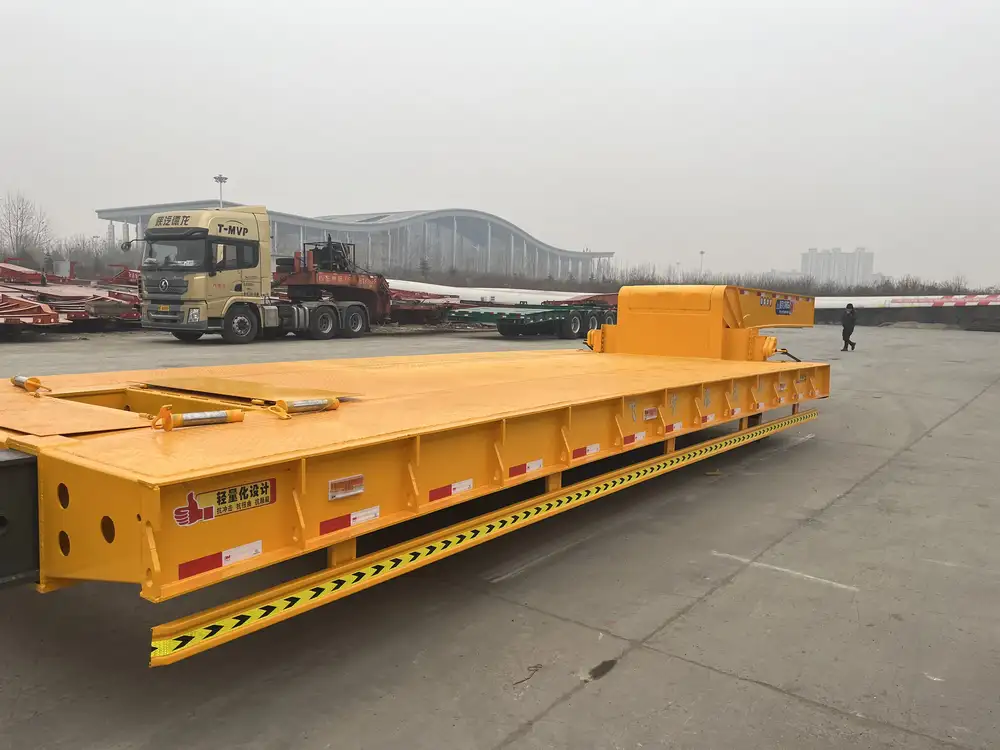Loading tubing onto a semi-trailer is a meticulous process that, when executed correctly, ensures safety, efficiency, and protection of the cargo. This guide provides an in-depth exploration of the best practices, techniques, and considerations for loading tubing, enabling you to optimize your operations and minimize risks.
Understanding Different Types of Tubing
Before diving into the loading process, it’s essential to understand the various kinds of tubing that might be loaded onto a semi-trailer. Tubing varies significantly in material, diameter, length, and application.
| Type of Tubing | Material | Common Uses |
|---|---|---|
| Steel | Steel | Construction, Oil and Gas |
| PVC | Polyvinyl Chloride | Plumbing, Electrical Conduits |
| Copper | Copper | Electrical Wiring |
| Aluminum | Aluminum | Lightweight Structures, Aerospace |
Understanding the specific type of tubing will inform your loading strategy, including the required equipment and safety measures.
Preparing for Loading
Preparation is the cornerstone of a successful loading operation. Here’s a structured approach to get ready for loading tubing on a semi-trailer.

1. Inspect the Equipment
- Semi-Trailer Condition: Ensure the semi-trailer is in excellent working condition. Check for structural integrity, particularly the trailer bed, ramps, and securing devices.
- Loading Equipment: Use forklifts or cranes as necessary. Inspect them for safe operational status.
- Safety Gear: Make sure all workers are equipped with necessary safety gear, including helmets, gloves, and steel-toed boots.
2. Assess the Load Specifications
- Weight Limits: Verify the weight limits of the semi-trailer. Each trailer has a Maximum Gross Vehicle Weight Rating (GVWR) detailed on its certification plate.
- Length Considerations: Measure the total length of the tubing to ensure it fits properly within the bounds of the trailer.
3. Plan the Loading Sequence
- Order of Loading: Strategically plan the entry of each piece of tubing based on size and weight. Heavier tubing should ideally be loaded first to balance the weight distribution effectively.

Techniques for Loading Tubing
The actual loading of tubing onto a semi-trailer can be challenging and requires specific techniques to ensure safety and efficiency.
1. Utilizing Forklifts and Cranes
Depending on the size and weight of the tubing, determine whether to use forklifts or cranes for loading.
- Forklifts: Ideal for handling smaller or lighter segments of tubing. Ensure that operators are trained and certified.
- Cranes: Necessary for larger tubing sections. Use appropriate rigging techniques to ensure stability.
2. Loading Operations: Step-by-Step

Step 1: Positioning
Position the semi-trailer on a flat, stable surface. This can minimize movement during the loading process and ensure safety.
Step 2: Align Tubing with the Trailer
Using forklifts or cranes, carefully lift the tubing and align it parallel to the trailer’s side. It should be positioned to rest evenly across the trailer.
Step 3: Lowering the Load
Lower the tubing slowly and gently onto the trailer bed. Avoid dropping or sliding the tubing to prevent damage.

3. Secure the Tubing
Once loaded, securing the tubing is vital. Follow these practices to ensure everything stays in place during transport.
- Straps and Tie-Downs: Use high-strength straps rated for the load’s weight. Properly wrap and secure them around the tubing.
- Blocking and Framing: Utilize wooden blocks or frames to create barriers around the tubing, preventing lateral movement.
- Tarps for Protection: If transporting over long distances, cover the tubing with tarps to protect it from environmental elements.
Loading Considerations for Specific Applications
Each industry has specific loading considerations, depending on the type of tubing being transported. Below are typical considerations for various sectors.
Construction Industry
- Heavy Steel Tubes: Use multiple tie-downs and ensure blocks are located at both ends for stability.
- Overwidth Loads: Check state regulations concerning oversize loads; pilot vehicles might be required.

Oil and Gas Industry
- Corrosion-Resistant Tubes: Ensure protection from environmental exposure with tarps or protective coatings.
- Pressure Testing: Ensure that tubing has been pressure-tested and is labeled accordingly.
Plumbing and Electrical
- PVC and Copper Tubes: Lightweight but require protection against crushing. Use proper stacking techniques.
Safety Considerations: Maintaining a Safe Environment
Safety during loading operations cannot be overstated. Here are core safety measures to implement:

Training
- All personnel involved in loading must be adequately trained on equipment and safety protocols.
Hazard Assessment
- Conduct a thorough hazard assessment before loading. Identify possible risks and available control measures.
Use of Signage
- Proper signage should be displayed in the loading area to inform all workers of loading protocols and safety practices.

Emergency Preparedness
- Have emergency kits and procedures in place. Ensure that first-aid equipment is accessible, and workers are aware of its location.
Post-Loading Inspection
After loading, performing a thorough inspection is critical.
1. Verify Securement
Check that all straps and blocks are tight and positioned correctly. Tighten or reposition as needed.

2. Weight Distribution
Inspect how the weight is distributed across the trailer. Adjust any items if necessary to achieve balance.
3. Document Load Specifications
Maintain records of the load, including weight, type of tubing, and any specific packing notes.
4. Compliance Check
Ensure compliance with local and federal regulations regarding weight and cargo securement.

Conclusion: Optimize Your Loading Process
Loading tubing onto a semi-trailer is crucial for manufacturers and transporters in various industries. Following a structured approach, understanding the specific requirements of various tubing types, and implementing robust safety measures can significantly enhance the process.
Next Steps
- Regularly review and train staff on best practices for loading and securing tubing.
- Implement periodic audits of your loading process to identify areas for improvement.
- Consider machinery upgrades that facilitate smoother loading operations.
By embracing these practices, you’ll not only ensure the safety of your cargo but also enhance operational efficiency, leading to higher levels of customer satisfaction and business success.
Implementing the above insights will help ensure that your loading operations are not only compliant but optimized, ultimately contributing to the success of your semi-trailer activities across various sectors.



